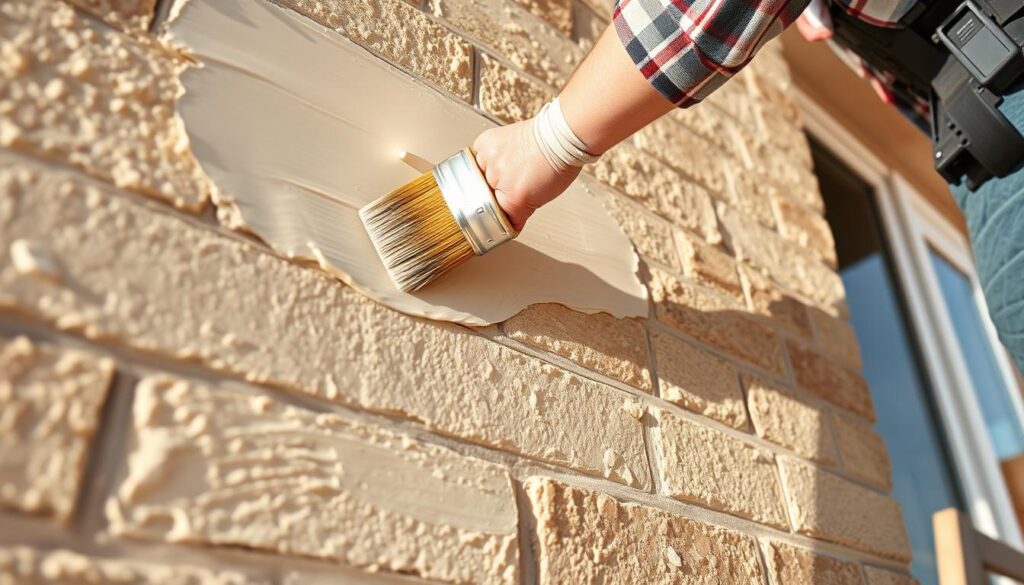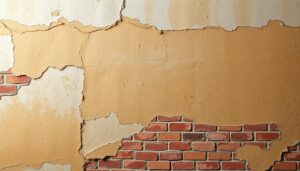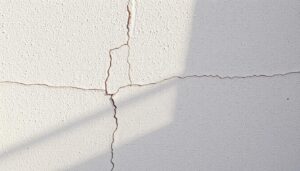Are you wondering how to revitalise your home’s exterior walls and protect them from the British weather? Painting your masonry render is a crucial step in maintaining your home’s aesthetic appeal and structural integrity.
Choosing the right paint for your masonry render can be daunting, but with the right guidance, you can achieve a professional-looking finish that lasts. In this comprehensive guide, we’ll walk you through the process of selecting the perfect paints for your home improvement project.
Key Takeaways
- Understand the importance of painting your masonry render for both aesthetic and protective purposes.
- Learn about the different types of masonry paints available and their key features.
- Discover how to choose the right paint for your specific project needs.
- Gain insights into ensuring a professional-looking finish that lasts.
- Make an informed decision about the best paint for your exterior masonry render project.
Understanding Exterior Masonry Render and Why It Needs Painting
Exterior masonry render is more than just a cosmetic layer; it serves as a protective barrier for your home. Masonry render is a protective coating applied to exterior walls that provides both aesthetic appeal and weather protection for your home’s structure.
What Is Masonry Render and Its Purpose
Masonry render serves multiple purposes, including weatherproofing, insulation, and providing a uniform appearance to exterior surfaces. Understanding the composition of your render, whether it’s cement-based, lime-based, or silicone, is crucial for selecting the appropriate paint for your project. The type of render you have will influence the type of paint you should use, ensuring compatibility and optimal performance.
| Type of Render | Purpose | Maintenance Requirement |
|---|---|---|
| Cement-Based | Weatherproofing, Insulation | Regular inspection and painting |
| Lime-Based | Aesthetic appeal, Breathability | Periodic repointing and painting |
| Silicone-Based | Water repellency, Durability | Less frequent maintenance, but requires specific paint |
Signs Your Exterior Render Needs Painting
Over time, exterior render can show signs of deterioration such as cracking, flaking, discoloration, or algae growth, indicating it’s time for a fresh coat of paint. Moisture penetration is a common issue with aging render, which can lead to more serious structural problems if not addressed promptly. Regular painting of masonry render not only enhances your home’s appearance but also extends the lifespan of the render itself by providing an additional protective barrier.
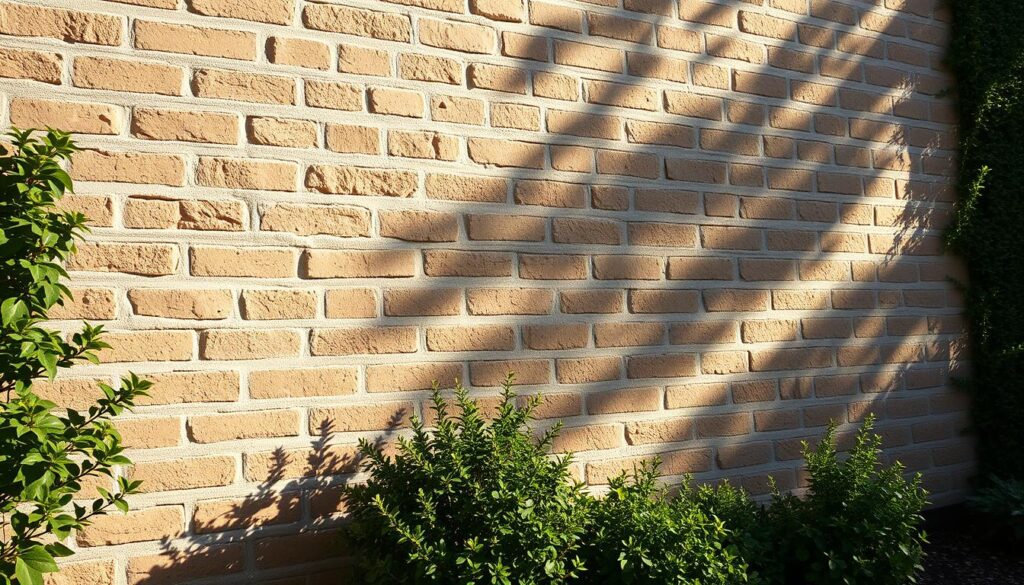
Different types of render have different maintenance requirements, which will influence your painting project timeline and choice of products. By understanding the specific needs of your masonry render, you can ensure that your home remains protected and looks its best.
Types of Paint for Exterior Masonry Render
Choosing the correct masonry paint is vital for a successful exterior rendering project. The right paint not only enhances the appearance of your property but also provides a protective layer against various environmental factors.
Silicone-Based Masonry Paints
Silicone-based masonry paints are designed to be water-resistant and highly breathable, making them ideal for modern silicone renders and properties in areas with high rainfall. By using a silicone-based paint, you can maintain the benefits of your silicone render, ensuring that it remains durable and long-lasting.
Acrylic-Based Masonry Paints
Acrylic-based masonry paints are popular for their durability and colour retention. However, they may not offer the same level of breathability as silicone-based alternatives. It’s essential to consider the type of render you have before choosing an acrylic-based paint to avoid compromising its protective qualities.
Textured vs. Smooth Masonry Paints
Understanding the difference between textured and smooth masonry paints will help you achieve your desired aesthetic finish. Textured paints can hide surface imperfections, while smooth paints provide a uniform finish. Consider the condition of your render and the desired outcome when deciding between these options.
When selecting a masonry paint, it’s crucial to consider factors such as breathability, water resistance, and durability. A well-chosen paint will not only enhance the appearance of your property but also provide long-term protection against the elements.
| Paint Type | Breathability | Water Resistance | Durability |
|---|---|---|---|
| Silicone-Based | High | High | High |
| Acrylic-Based | Medium | Medium | High |
As highlighted by experts, “the compatibility between your existing render and your chosen paint is essential—using the wrong type can compromise both appearance and protective qualities.” Ensuring that you select a paint that is compatible with your render will help you achieve a successful outcome for your project.
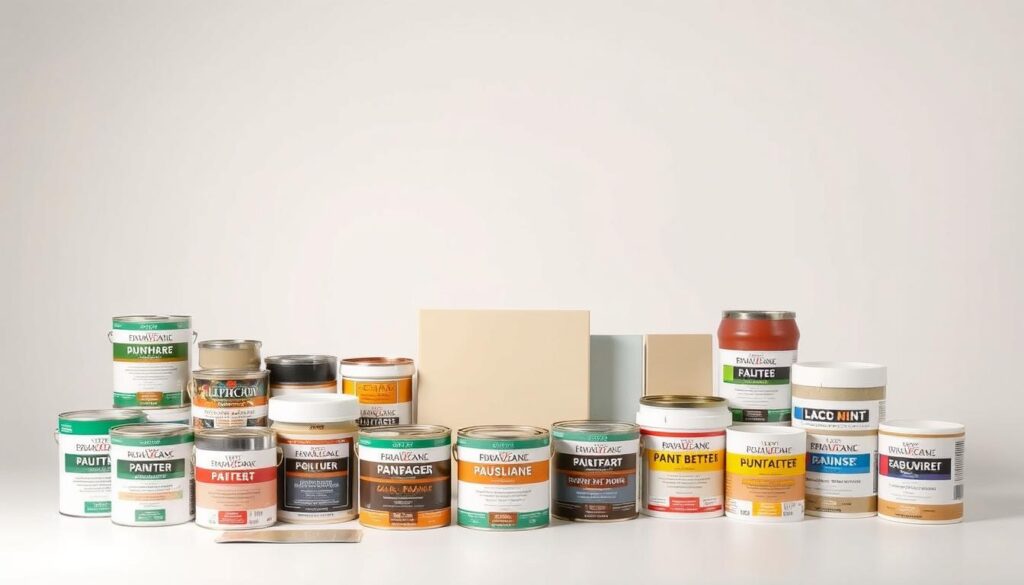
Key Features to Look for When Choosing Paint for Exterior Masonry Render
To achieve a durable and visually appealing finish, it’s crucial to understand the key features of masonry paint. The right paint can significantly enhance the longevity and appearance of your exterior render.
Breathability and Moisture Regulation
A breathable masonry paint is essential for allowing moisture to escape from the walls, preventing damp issues and premature paint failure. This feature is critical for maintaining the integrity of your exterior render.
Weather Resistance and Durability
The weather resistance of masonry paint varies significantly between formulations. Premium options offer superior protection against weather conditions such as rain, frost, and temperature fluctuations, ensuring a longer-lasting finish.
UV Protection and Colour Retention
UV protection is vital for preventing colour fading and degradation from sunlight exposure. This is particularly important for south-facing walls or properties in exposed locations, where the paint is subjected to intense sunlight.
Coverage and Application Properties
The coverage rate of masonry paint directly impacts your project budget. Higher quality paints may cost more initially but often provide better coverage per litre, potentially reducing the overall cost. Additionally, the application properties, such as consistency and drying time, affect the ease of use and project timeline.
By considering these key features, you can select a masonry paint that meets your needs and ensures a successful project outcome.
Top Products to Paint Exterior Masonry Render
With numerous masonry paint options available in the UK market, it’s essential to compare and contrast the top products to find the best fit for your project. When selecting a masonry paint, you should consider factors such as durability, weather resistance, and colour retention. For more information on the best masonry paint options, you can visit https://paintersworld.co.uk/painters-advice/best-masonry-paint.
Emperor Masonry Paint
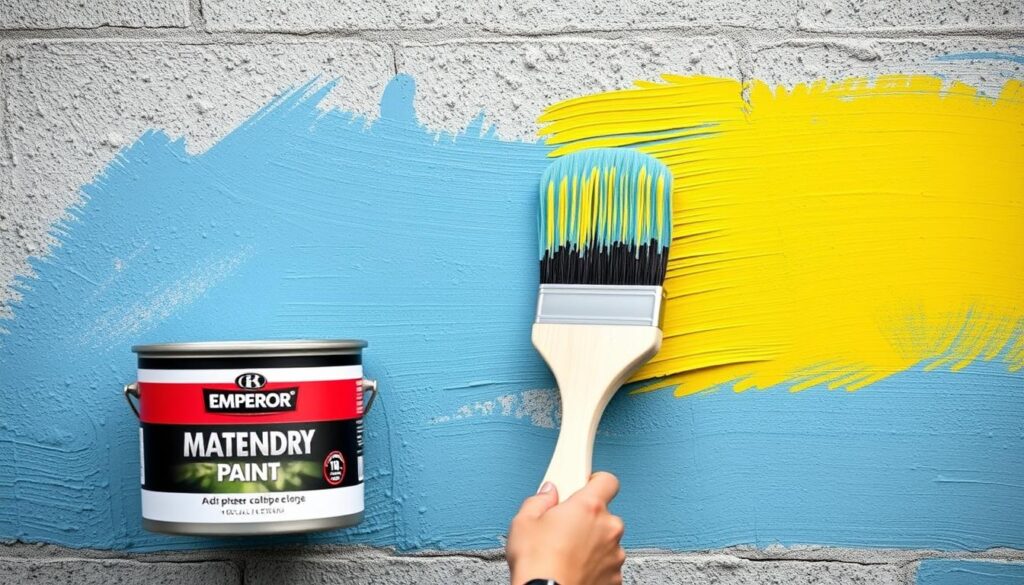
Features and Benefits
Emperor Masonry Paint stands out with its innovative super hydrophobic technology, causing rainwater to bead and roll off walls, reducing water absorption by up to 96%. This super hydrophobic property helps prevent penetrating damp, ensuring your exterior masonry render remains dry and protected.
Pros and Cons
The pros of Emperor Masonry Paint include its highly breathable nature, lifetime guarantee, and self-cleaning properties. However, some users may find it more expensive than other options on the market.
Dulux Weathershield Masonry Paint
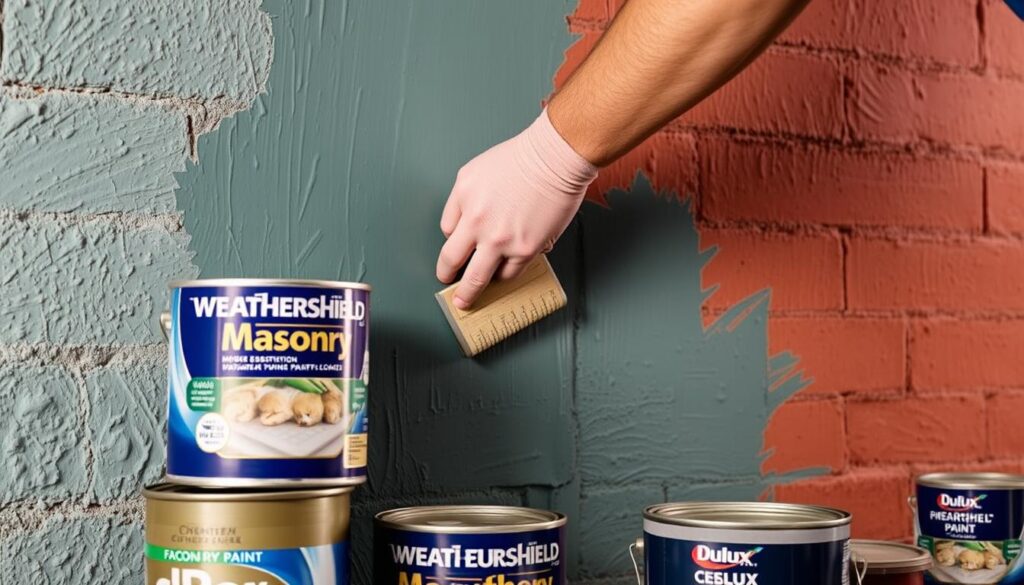
Features and Benefits
Dulux Weathershield is a trusted trade option that provides excellent weather protection and comes in a wide range of masonry paint colours, making it versatile for various exterior masonry projects. Its trade weathershield formula ensures a durable finish that withstands harsh weather conditions.
Pros and Cons
The pros of Dulux Weathershield Masonry Paint include its excellent weather resistance and wide colour range. However, some users may experience issues with colour retention over time.
Sandtex Masonry Paint
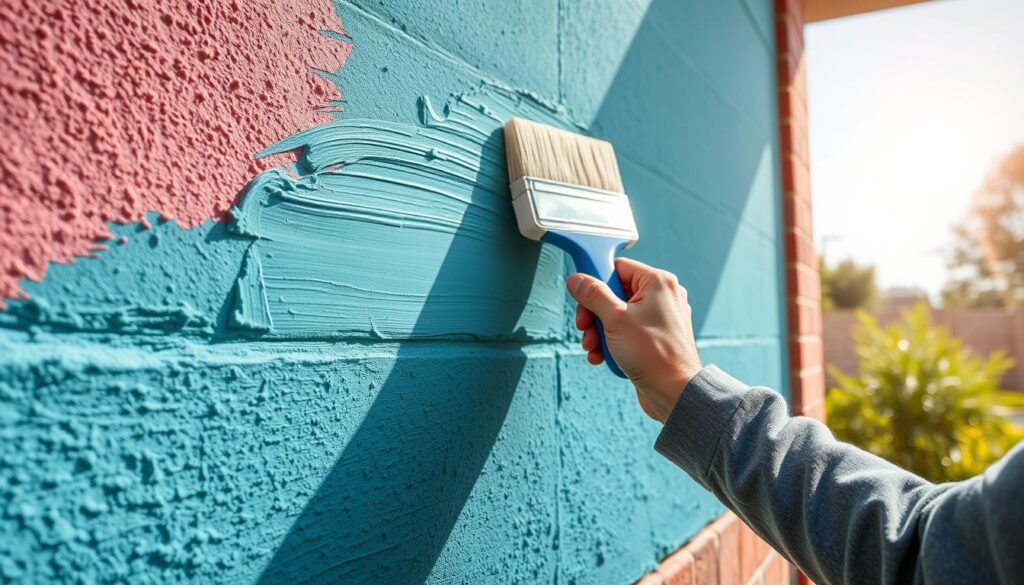
Features and Benefits
Sandtex offers both smooth and textured finishes with strong UV resistance properties, preventing peeling and flaking while protecting against pollution and mould growth. This makes it an excellent choice for exterior masonry render projects.
Pros and Cons
The pros of Sandtex Masonry Paint include its strong UV resistance and versatility in terms of finish. However, some users may find that it requires multiple coats for optimal coverage.
Budget-Friendly Options
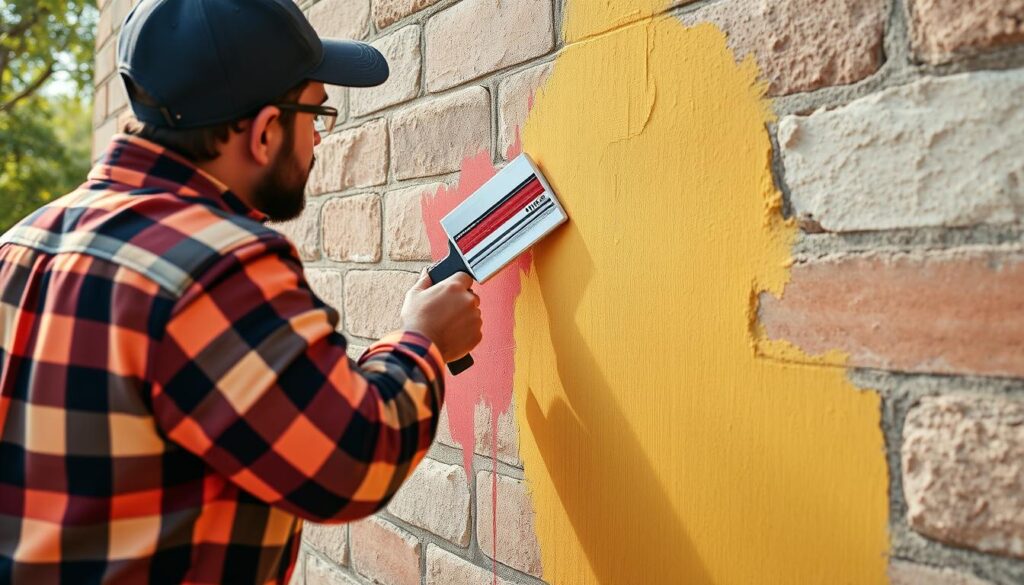
Features and Benefits
For those working with financial constraints, budget-friendly masonry paint options provide decent coverage and protection. While they may not offer the same level of durability as premium products, they are a cost-effective solution for smaller projects.
Pros and Cons
The pros of budget-friendly masonry paint include its affordability and decent performance. However, it may require more frequent reapplication compared to premium alternatives, which can increase its overall cost in the long run.
How to Successfully Paint Exterior Masonry Render
To achieve a professional finish on your exterior masonry render, careful preparation and application are key. Painting exterior masonry render is not just about aesthetics; it’s also about protecting the surface from the elements.
Preparation Steps
Begin by thoroughly cleaning the render surface to remove dirt, algae, or loose material that could compromise paint adhesion. Repair any cracks or damaged areas before painting, as these will worsen if left untreated beneath a new coat of paint.
Application Techniques and Tools
Choose the right tools for your specific masonry paint. Most can be applied with a brush or roller, but some trade products may recommend specific methods. For instance, Emperor Paint products can be applied using a brush, roller, or airless spray machine. Apply masonry paint in consistent, even strokes, working from top to bottom to avoid visible lap marks.
Weather Considerations and Drying Times
Weather conditions significantly impact both application and drying times. Ideally, paint exterior masonry render on dry days with temperatures between 10-25°C, avoiding direct sunlight. Most masonry paints require at least 4-8 hours between coats, but this can extend in cooler or more humid conditions.
| Condition | Drying Time |
|---|---|
| Normal (20°C) | 4-8 hours |
| Cooler or Humid | Longer than 8 hours |
For Emperor Masonry Paint, you can recoat after approximately 8 hours at 20°C. The surface is dry when there are no visible marks and it’s dry to the touch, typically within 2 hours, with full beading effect after 24 hours.
Conclusion: Making the Right Choice for Your Exterior Rendering Project
To ensure a successful exterior rendering project, it’s essential to balance factors such as breathability, weather resistance, and colour retention when choosing masonry paint. Consider the specific needs of your property, including exposure to weather and desired finish. Premium trade products like Emperor, Dulux Weathershield, and Sandtex offer superior performance, while budget-friendly options can still deliver acceptable results. Proper application techniques are just as important as product selection. Factor in delivery options and consider requesting sample pots before committing to a full project.
